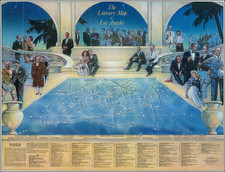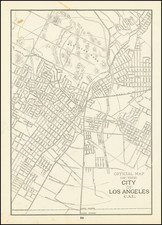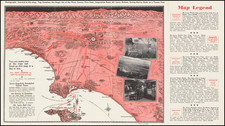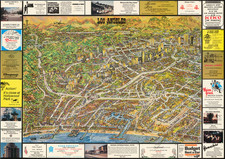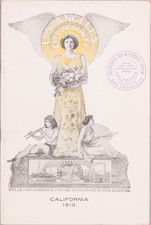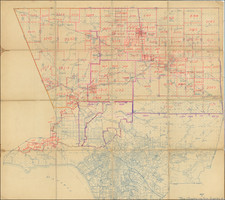This large manuscript plan offers an expansive and detailed treatment of the California Central Railway yards in Downtown Los Angeles, situated between Macy Street and Enterprise Street west of the Los Angeles River. At over 10-feet wide, this intricate plan is not merely a static document but a living record of the railway's evolution, comprising multiple layers of manuscript additions and amendments, such as tracks laid in 1892 and '97, buildings, lots, and more. The notation of the "Official West Boundary of Los Angeles River" at the top of the plan further anchors it within the geography and history of the city.
The California Central Railway was chartered in 1887 as part of the larger Southern California railway boom of the late 19th century. It played a pivotal role in connecting various parts of the region, fostering economic development, and stimulating population growth in Los Angeles and the surrounding areas. The railway facilitated the transportation of both passengers and goods, including critical industries like agriculture, mining, and manufacturing.
This specific plan of the Los Angeles yards reveals much about the operational complexity and growth of the railway. The meticulous detailing of tracks, including those added in the 1890s, along with the various buildings and lots, provides insights into the planning and execution of the railway's infrastructure. Such a large-scale and elaborate plan would have been essential for the efficient management of the yard's logistical challenges and the integration of new technologies and practices as the railway expanded.
The history of the California Central Railway is, in many ways, emblematic of Los Angeles's transformation during this period. The railway's development, as captured in this plan, reflects the broader trends of industrialization, urbanization, and modernization that were reshaping the American West. It provides a tangible link to a time when railroads were the arteries of commerce and communication, connecting communities, and driving progress. The manuscript plan, with its layers of additions and amendments, serves as a historical palimpsest, chronicling not only the growth of a railway but also the evolving aspirations and challenges of a burgeoning city.











